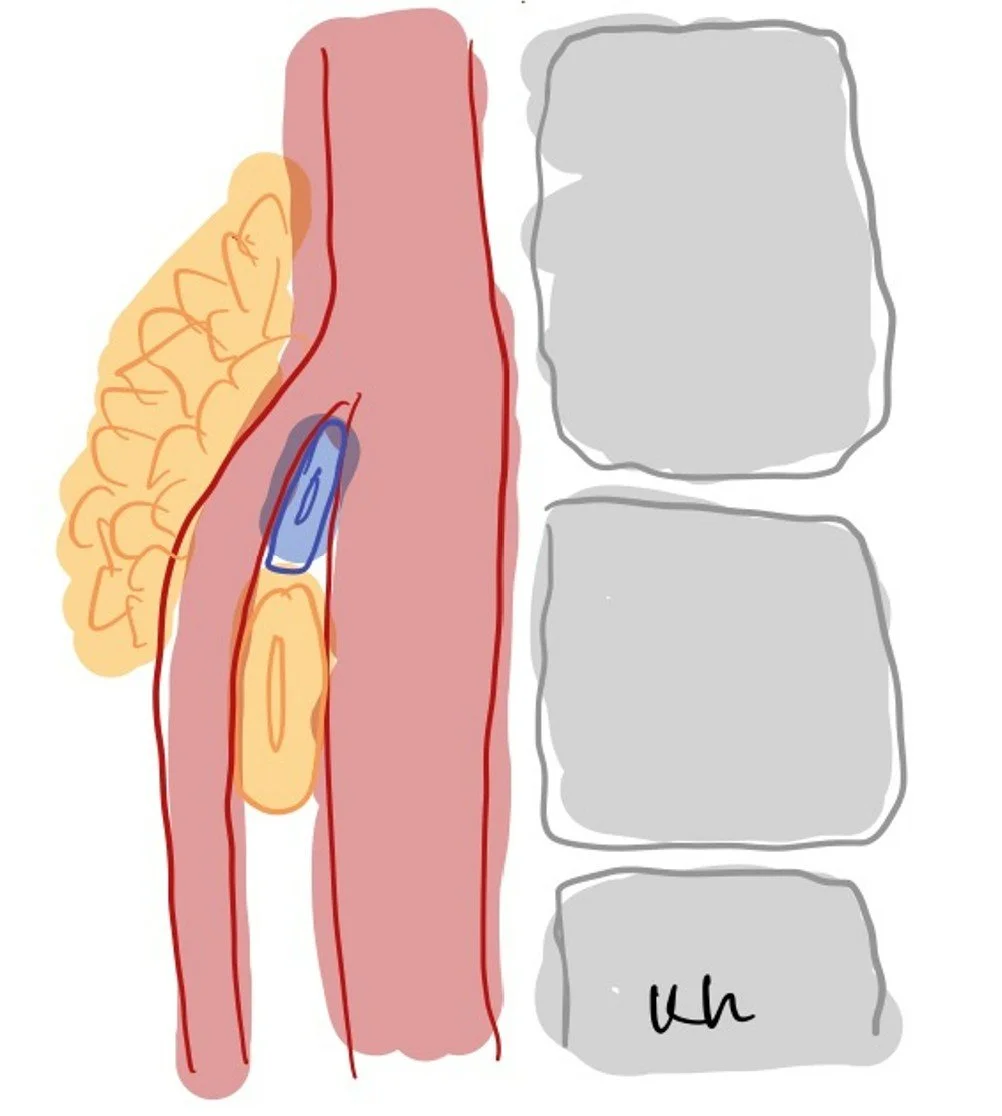Superior Mesenteric Artery Syndrome
Superior mesenteric artery syndrome (SMAS) is a rare gastrointestinal disorder characterized by the compression of the third portion of the duodenum between the superior mesenteric artery (SMA) and the abdominal aorta. This vascular compression leads to partial or complete obstruction of the duodenum, resulting in symptoms such as nausea, vomiting, abdominal pain, and weight loss. The condition is often associated with significant weight loss or anatomical abnormalities that reduce the normally protective fat cushion surrounding the artery, thereby narrowing the angle between the SMA and the aorta.
Because SMAS shares same anatomic abnormality of narrowed aortomesenteric angle with the Nutcracker Syndrome INCS), it is important to always evaluate for symptoms of both syndromes because the left renal vein is almost always compressed severely in the case of SMAS. Often patients have the left renal vein compression but do not have the symptoms which is called Nutcracker Phenomena, but there are times when patients do have symptoms from the venous compression presenting with both SMAS and NCS. Detailed symptomatic investigation and imaging work up becomes important in these patients.
Diagnosis of SMAS is challenging due to its shared symptoms with many more common pathologies, and diverging diagnostic protocols and interpretations. It is not enough to just see the compression on the imaging, but requires a functional study such as Upper GI Follow Through to observe the quality and quantity of contrast transiting through the 3rd part of the duodenum.
Diagnostic Work UP
CT | Upper GI Series | Endoscopy | Motility Studies | US
Surgical Options
Open | Laparoscopic | Robotics
There are numerous surgical options described and performed for the Superior Mesenteric Artery Syndrome. They all have their own risk and benefits associated with them. Following are the main ones to name a few:
Gastroduodenostomy
Gastrojejunostomy
Duodenojejunostomy
Duodenal Transposition
Roux-en-Y Procedure
Roux-en-Y Gastric Bypass
Strong Procedure
Duodenal Derotation +/- additive surgeries
SMA Transposition
Experts in this field seems to favor the duodenal derotation as most of them have background training in pediatric surgery and adaptation of duodenal derotation for SMAS makes sense as it is traditionally done for malrotation patients mostly diagnosed during childhood.


